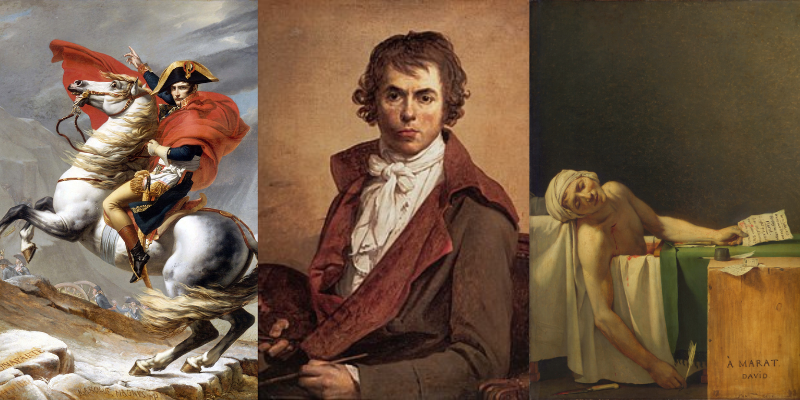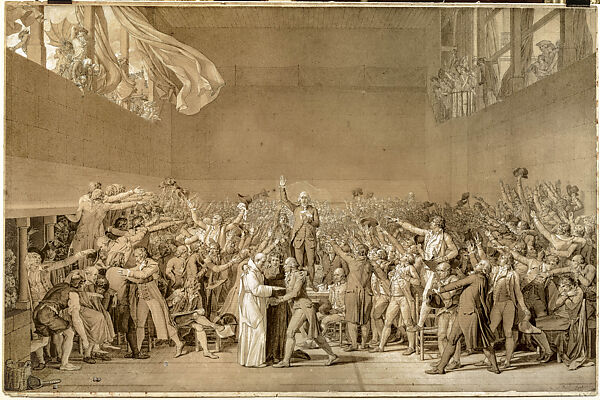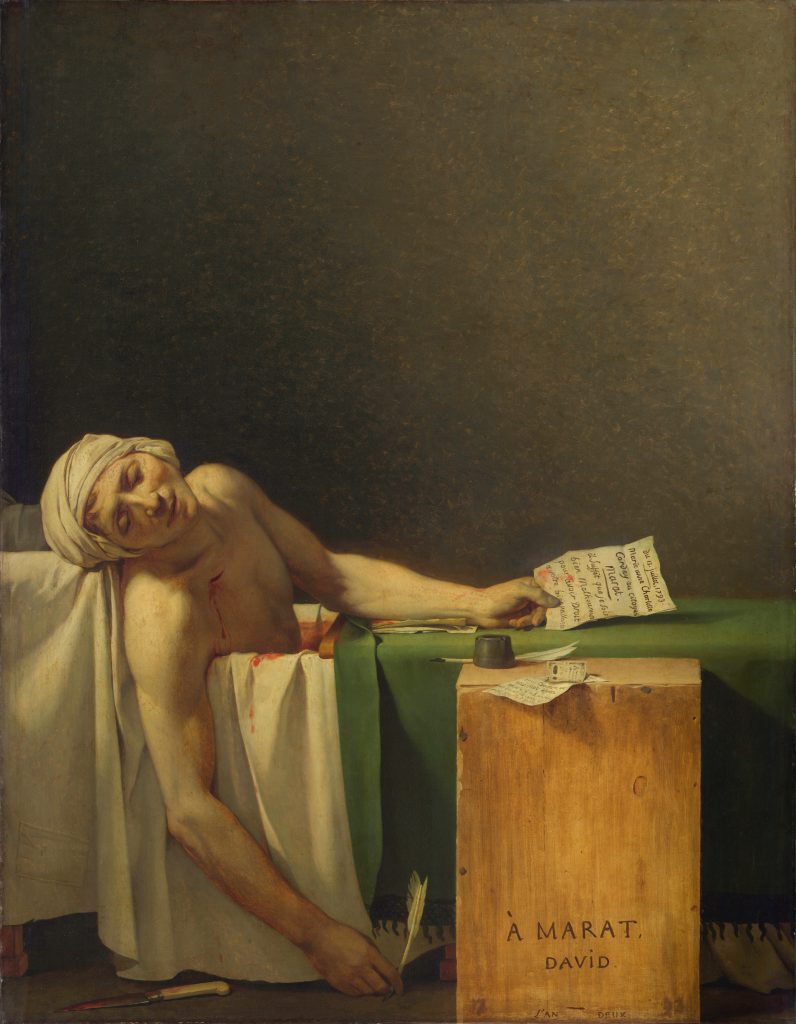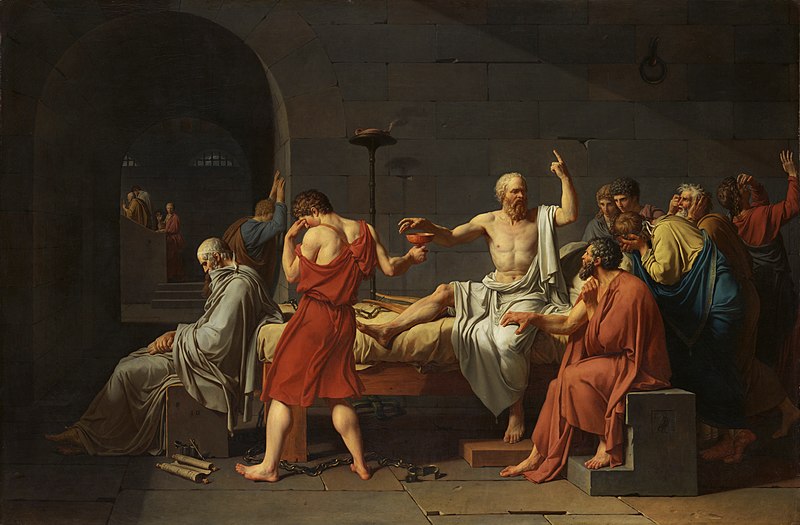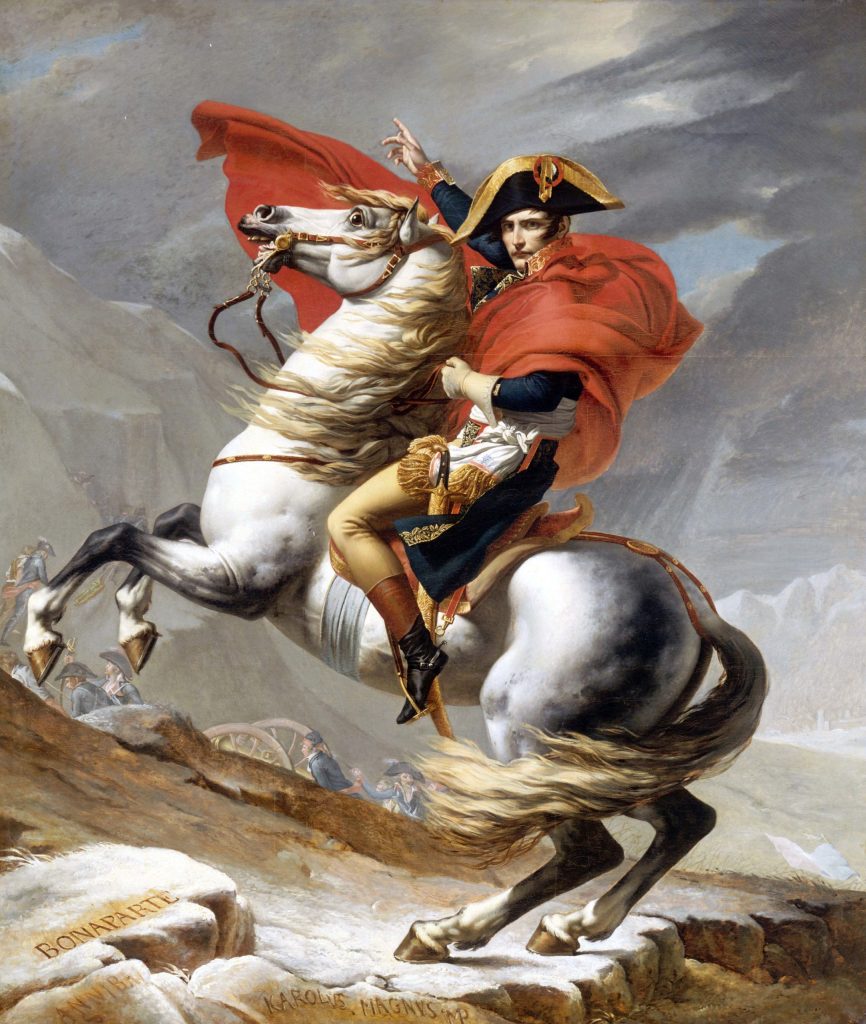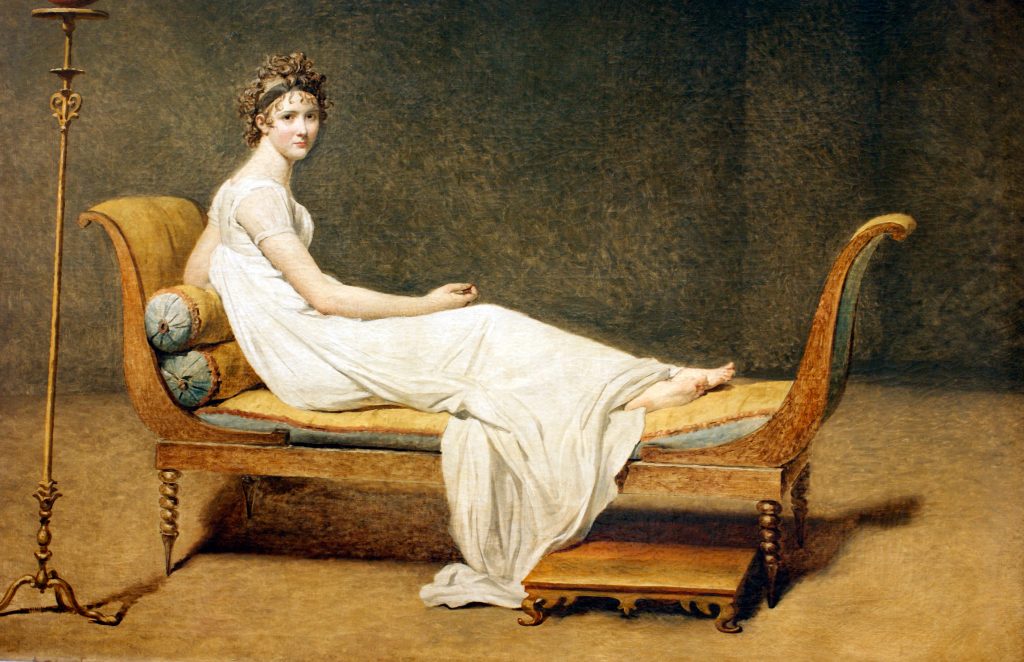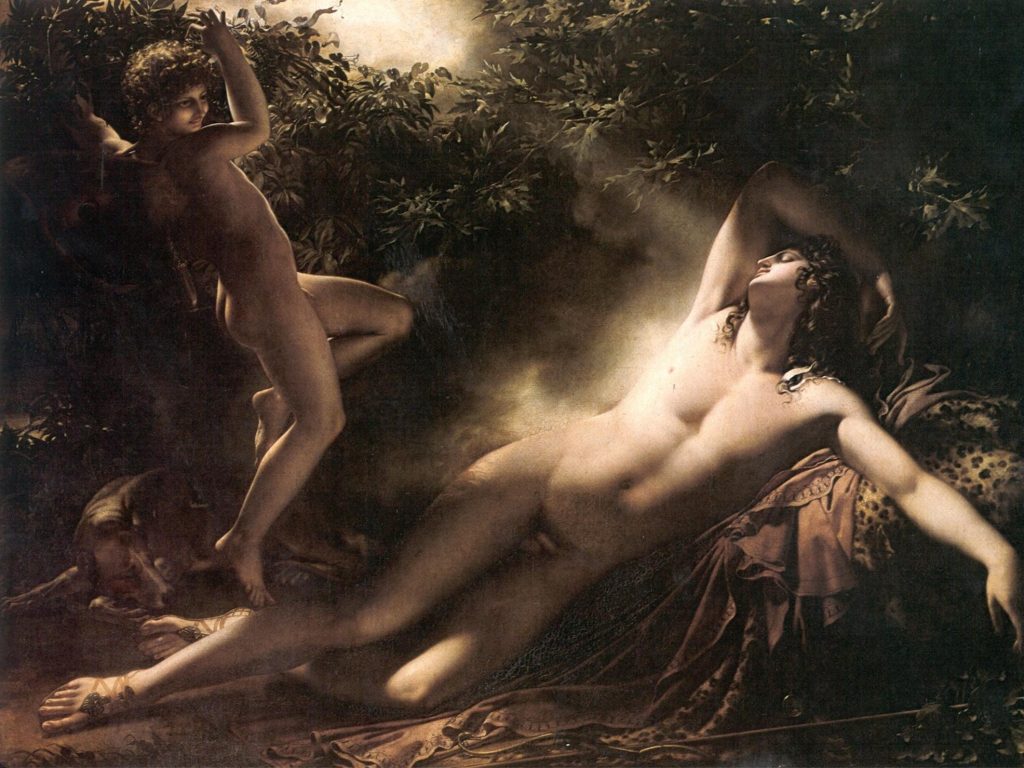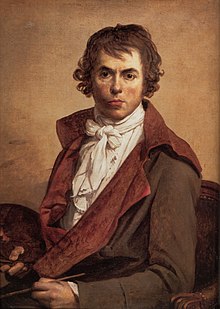Famous Neoclassical painter Jacques-Louis David was born on this day, 30th August 1748. He produced a great body of work throughout the 18th and 19th centuries that caught the spirit of the time while drawing inspiration from classical themes and historical events. His artwork displays an acute eye for detail, a dedication to precision, and a passion for narrative storytelling. Given below are 11 famous Jacques-Louis David paintings in celebration of his day of birth:
David’s preliminary drawing depicts the crucial occasion of the Tennis Court Oath during the French Revolution and prominent participants Bailly and Robespierre. The mammoth undertaking was intended to commemorate the anniversary of the revolution but was derailed by shifting political sands.
David’s portrait of the assassinated revolutionary Jean-Paul Marat elevates his passing into martyrdom. Marat is transformed into a figure akin to Christ by symbolic motifs and meticulous detailing, and the peaceful picture hides the event’s horror.
The painting emphasises Socrates’ moral fortitude as he quietly consumes the hemlock, portraying his heroic self-sacrifice. David’s artwork conveys the philosopher’s tenacity as well as the disciples’ feelings, harmonising with the audience’s appreciation for defiance of unfair power.
Napoleon is portrayed riding successfully through perilous terrain in this equestrian image, which exalts his authority. Napoleon’s authority and contribution to reestablishing stability after the Revolution are highlighted by David’s artistic licence, which mixes symbolism and history.
5. The Oath of the Horatii
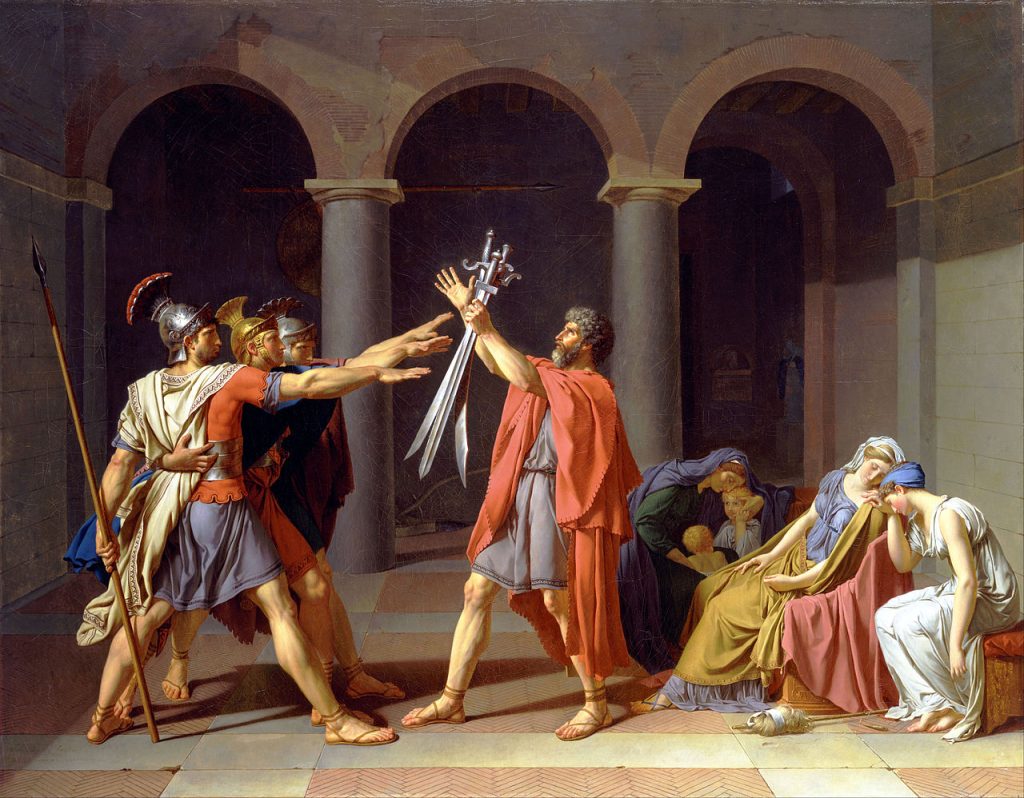
Courtesy: Wikipedia
The Roman Horatii brothers’ dedication to defending their motherland is depicted in David’s classic picture, which contrasts their stoic resolution with the suffering of the ladies they leave behind. The artwork exudes nationalism and selflessness, which are consistent with the principles of the French Revolution.
-
The Lictors Returning to Brutus the Bodies of his Sons
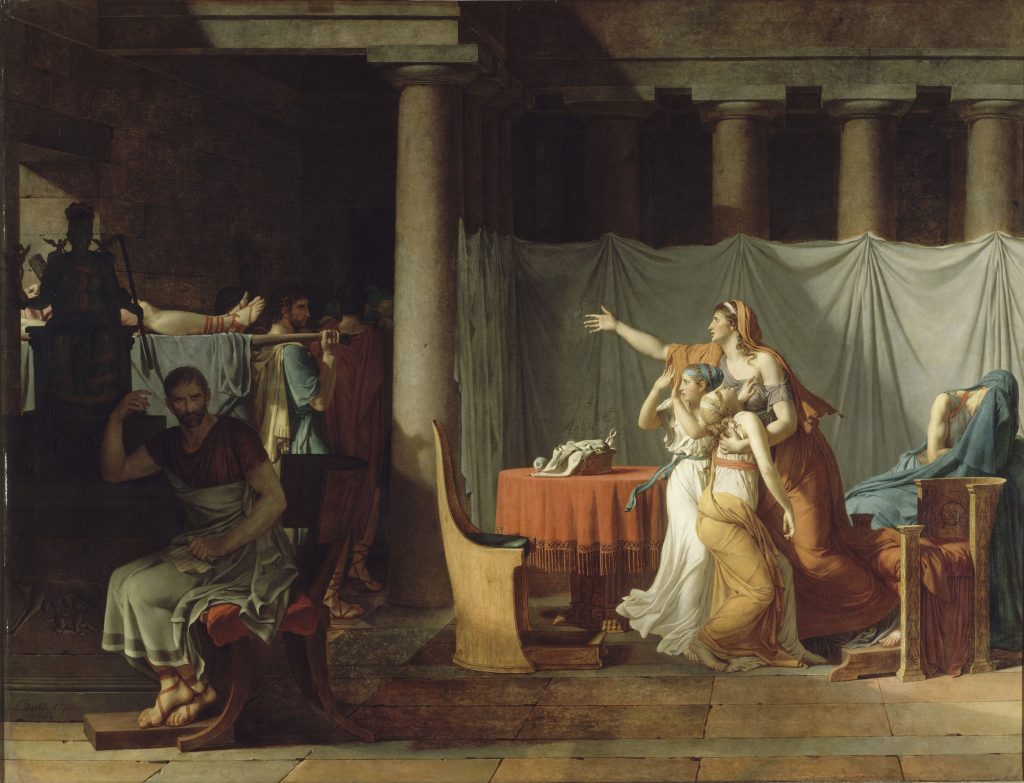
The Lictors Returning to Brutus the Bodies of his Sons.
Courtesy: Wikipedia
David depicts pain, loyalty, and sacrifice while capturing the inner anguish of Brutus, who executed his own sons for treachery. The compelling story in the artwork was previously thought to be too political to be displayed during the Revolution.
-
The Intervention of the Sabine Women
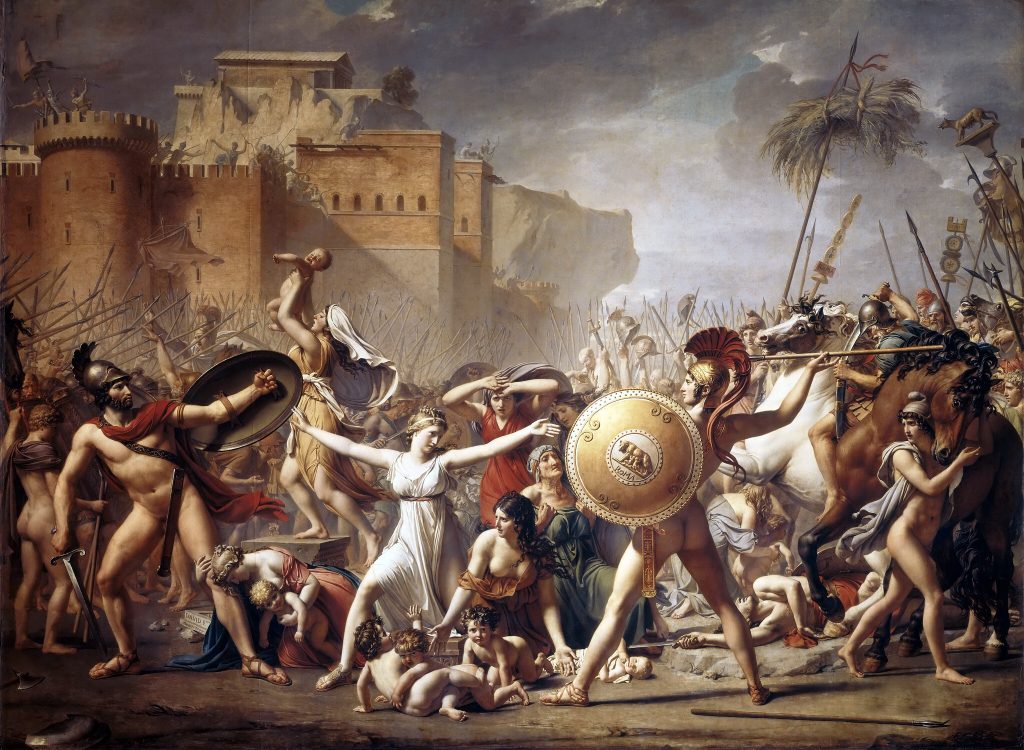
The Intervention of the Sabine Women.
Courtesy: Obelisk Art History
David’s picture represented the yearning for peace as the Revolution came to an end. In the intricate story, the Sabine women work as peacemakers between rival factions, echoing current reconciliation initiatives in post-Revolutionary France.
-
Mars Disarmed by Venus and the Three Graces
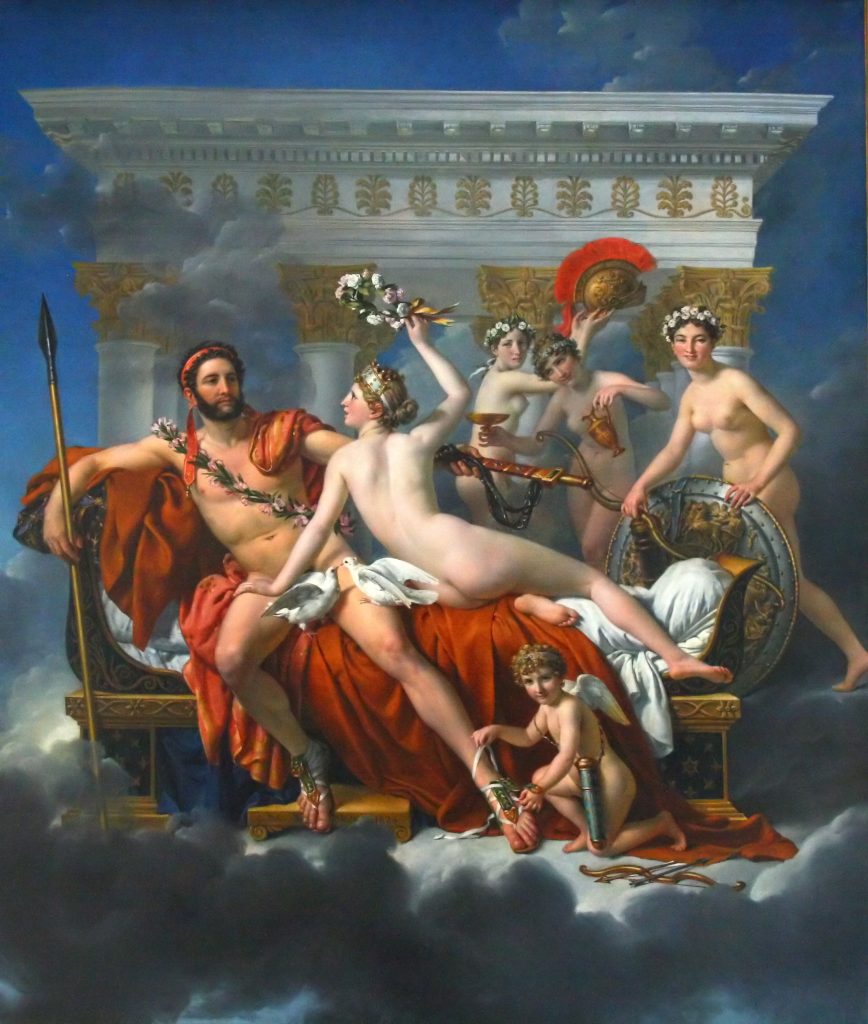
Mars Disarmed by Venus and the Three Graces.
Courtesy: Obelisk Art History
This final piece by David, which departs from his usual aesthetic, has a softer, more sensual composition. Venus disarming Mars reflects a change in David’s strategy in response to shifting tastes in painting that favoured Romanticism.
Madame Récamier is seen here lounging on a sofa and radiating simplicity and elegance. Her calm beauty is highlighted by David’s command of light and composition against a plain background, emphasising her singular presence.
In contrast to David’s classical aesthetic, Girodet’s work embraces sensuality and shuns moralistic ideas. The depiction of Endymion demonstrates a change in aesthetic tastes in the late 18th century.
David’s self-portrait exhibits a sense of self-awareness about his artistic abilities and demonstrates his love of Neoclassical design. His focused gaze and meticulous attention to detail are highlighted in the composition, which perfectly captures his unique artistic persona.
Jacques-Louis David’s paintings reflect not only historical events but also the evolving artistic trends of his time. From the moralistic narratives of the Enlightenment to the shifting preferences of the Romantic era, his work continues to be a source of intrigue to people all around the world.
Read Also:

